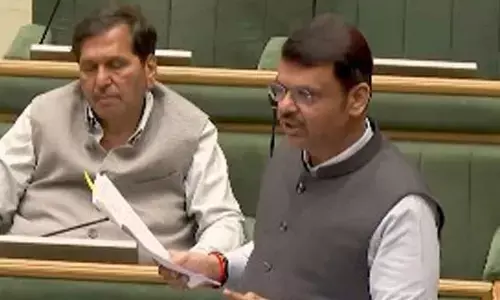Breaking Barriers: Transforming Lives through Financial Inclusion for All

To begin with, let us reflect on the life and struggles of Rashmirati, a skilled artisan dwelling in the city of Bhopal. Despite her remarkable craftsmanship, Rashmirati's lack of access to formal financial services hindered her from scaling her small business. Unable to secure a loan in absence of a credit history, she remained trapped in a cycle of limited resources and untapped potential. This poignant narrative illustrates how traditional banking practices can stifle the entrepreneurial spirit and economic advancement of blue-collar workers.
The Global Challenge: A Billion Unbanked Souls
In this age of unprecedented connectivity and growth, where global conversations transcend boundaries, it is a sobering reality that 1.7 billion adults worldwide remain unbanked, deprived of access to formal financial services. This staggering statistic, revealed by the Global Findex Database, speaks volumes about the chasm that financial exclusion has carved in societies across the globe. An even graver concern is the stark gender divide, with a 7% gender gap in account ownership evident in developing economies, highlighting the pronounced lack of access that women face in the realm of finance. These unfortunate figures make it all too clear that the concept of financial inclusivity often remains confined to eloquent speeches, falling short when it comes to tangible implementation.
India's Dilemma: Millions Left in the Financial Shadows
Now, let us redirect our investigative focus to the World’s biggest democracy. The issue of financial exclusion is a glaring problem in India, a nation that brims with aspiration and ambition. Astonishingly, over 190 million adults in the country find themselves shut out from the embrace of formal financial institutions. This exclusion is particularly significant for blue-collar workers, who are the backbone of economies worldwide. Despite being celebrated as integral contributors to society, they are routinely marginalised by financial institutions, compelled to navigate a labyrinthine maze of stringent prerequisites that invariably block their path to financial security. Although, the Government of India has relentlessly endeavored to bring the vast cesspool of the underserved Indian populace under the financial cover through various initiatives, the task is easier said than done.
Take for instance, the introduction of the eSHRAM portal by the Ministry of Labour and Employment, aimed at establishing a National Database of Unorganised Workers (NDUW). This initiative was designed to maximise their employability and ensure that the workers can access the benefits offered by social security schemes. In spite of this strategic scheme, a pan-nation implementation has proven to be a herculean task. Government benefits have not reached a substantial majority of workers, with 56% of them remaining unassisted. A mere 12.2% of workers have enrolled for Ayushman Bharat, and approximately 11.5% possess a state health card.That’s not all; a meager 7% of workers have completed their registration on the eShram portal - a grim reminder of the fact that the effort to extend a macro-economic financial cover for the hitherto underbanked masses has been a David versus Goliath battle. Regardless of the small winnings, it has left the nation gasping for more.
Bridging the Gap: Navigating the Chasm Between Inclusion Rhetoric and Exclusion Reality in Finance
The paradox of inclusion rhetoric versus exclusion reality in financial institutions is exacerbated by a palpable inconsistency between their proclaimed commitment to inclusivity and their adherence to archaic norms that perpetuate exclusion. While these institutions champion financial empowerment, they paradoxically rely on criteria such as credit scores, minimum income thresholds, complex documentation procedures, and language-centric interfaces, creating a pervasive disparity that consistently stifles the financial aspirations of marginalised individuals. This disconnect is acutely evident in employment-based exclusions, where ingrained biases unjustly leave out blue-collar workers like housekeepers and security guards, undermining the essence of inclusivity. Furthermore, the pursuit of financial inclusion remains elusive for those without robust credit histories, as credit scores, originally intended as indicators of financial prudence, paradoxically become barriers. Minimum income requirements and intricate documentation only serve to reinforce the divide, necessitating a reimagining and reconfiguration of practices within the financial sector to genuinely foster inclusivity.
Tales of Transformation: The Real Power of Inclusion
In definite contrast to Rashmirati, the success story of Ram Dayal, a construction worker in the state of Haryana, highlights the transformative power of inclusive financial solutions. Through WhatsApp ChatBot tailored to his language and needs, Ram Dayal gained access to microloans for tools and supplies, eradicating the hurdles posed by minimum income requirements and complex paperwork. With this newfound access to capital, he managed to elevate his business, securing a brighter future for himself and his family. Ram Dayal’s journey stands as a testament to the impact of innovative financial technologies in leveling the playing field for the marginalised workforce.
The narratives of Rashmirati and Ram Dayal clearly emphasise the urgent need to dismantle exclusionary financial practices. The stories of empowerment through technology highlight the path forward—a path where financial inclusion is not an abstract concept, but a reality that uplifts individuals and communities. These anecdotes from fast-developing economies are not isolated incidents; they are the keystones in a grand narrative of transformation, where technology, action, and empathy converge to ensure a promising future. A future, where financial inclusivity prevails.
Tech as the Equaliser: The Role of Technology
In this quest, technology emerges as the transformative agent. Streamlined documentation processes, multilingual interfaces, and innovative credit assessment models possess the potency to tear down barriers long embedded in the financial landscape. The potential is boundless; by leveraging technology, the financial industry can metamorphose from an exclusionary fortress into an inclusive ecosystem that empowers all members of society.
From mere Words to Deeds: The Imperative of Action
The imperative of action is paramount in the journey toward financial inclusion. Commitments to inclusivity are crucial, but it's the tangible measures that truly drive change. Many innovative enterprises are championing this cause with accessible, flexible financial products aimed at transforming the lives of the workforce, especially blue-collar workers. Financial inclusion isn't a passing trend; it's an unwavering pursuit rooted in the belief that every individual, regardless of their socioeconomic status, deserves economic empowerment. In conclusion, the urgency of financial inclusion calls us to break down exclusionary barriers and build bridges of opportunity. It's a rallying cry for the financial industry to embrace equity and justice through practical reforms. Technology is the key, and action is the vehicle for change. Initiatives like ours shift the discourse from rhetoric to impact, making financial inclusion a reality for all.
(The writer is a Co-founder of Entitled Solutions)














